2021-03-22
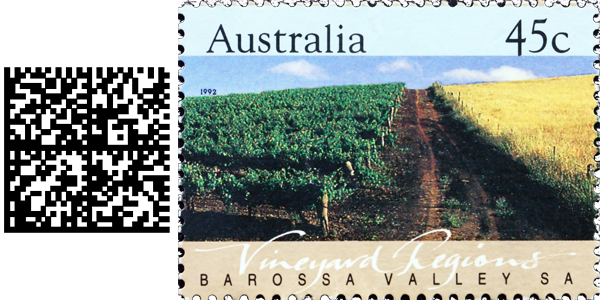
Welcome to the third country of the virtual world trip: Australia! DTas has planned a great round trip for the Official FLAGSTACK Volunteers and presents you the eighth of the 10 highlights of sights...
Let's go to the central southern tip of Australia! From Margaret River we travel virtually to the Barossa Valley... Come with us!
The Barossa Valley is an area about 70 km northeast of Adelaide in the Australian state of South Australia. With over 150 wineries and 80 cellars on about 10,000 hectares, the Barossa Valley is one of the world's large wine regions. Seven generations of winemakers and wine producers have made this fertile land one of Australia's best wine regions over the past 160 years through their consistently outstanding vintages.
Before European colonization, the Barossa Valley was home to a small group of Aborigines who subsisted on seeds, which they processed into damper, and on kangaroos, wallabies, possums, lizards and fish, which they hunted. The name of the valley comes from the surrounding Barossa Ranges, which are part of South Australia's Mount Lofty Ranges, and were named by William Light (the first European in the area) after a battle in Spain in which he fought and which the British won. Due to a mistake on official documents, the Spanish "Barrosa" became the Australian "Barossa".
The first groups of settlers in the Barossa Valley, which is about 13 km long and 14 km wide, were of English descent (from Cornwall) and settled in the vicinity of Lyndoch, but they were followed as early as 1838 by the first Germans, who had emigrated from Silesia, Prussia and Posen in search of (religious) freedom and now set about making a new start in Klemzig and Bethany. In 1847, one of the many German immigrants, Johann Grampp from Aichig near Kulmbach, planted the first vines at Jacob's Creek, establishing one of Australia's most successful wineries. Joseph Seppelt, another German-born immigrant, set the basis for another large winery at Seppeltsfield. Numerous other German wine growers followed, making wine the most important crop in the area. By 1890, this wine was already being exported to England, resulting in the dominance of viticulture in the Barossa Valley today.
About 20,000 people live in the Barossa Valley. The climate here is typically Mediterranean, with dry summers and mild winters. Most of the rain falls between April and October, with an average of 550 mm, although there are also cool nights during this period. In summer, from December to February, temperatures up to 35 °C are common.
There are other attractions in the Barossa Valley besides the numerous wineries:
- Sculpture Symposium Barossa: A park with 17 stone sculptures from 1988 and 2008.
- Old Union Chapel: Built in 1844 on land owned by George Fife Angas, this is the oldest public building in the Barossa Valley.
There is also the Hoffnungsthal Memorial, the Whispering Wall, the Herbig Family Tree and the Lyndoch Lavender Farm. You can browse WWW - these are also quite fascinating highlights!
Barossa German, a dialect of the German language, used to be spoken in this region. The dialect combined the German language with the use of English terms. However, it was more closely related to the German standard language than, for example, the similarly developed Pennsilfaanisch Deitsch in the USA. An example sentence is: Der rabbit ist über den fence gejumpt und hat die carrots abgenibbelt (The rabbit hopped over the fence and gnawed the carrots). During the First World War, the use of the German language was actively suppressed in Australia. Thus, German place names were renamed. Also, immigration from Germany broke off due to the war. As a result, Barossa German increasingly disappeared and is rarely spoken today.
The dialect is insanely simple - we can do that too: Der FLAGHUNTER ist über den fence gejumpt und hat die flags eingesammelt (The FLAGHUNTER has jumpt over the fence and collected the flags)!
A toast to your health - and see you soon...
Your Team FLAGSTACK

PS: Have you scanned the Friend Flag Code yet???
(Code Valid until 24.03.2021 - 20:00, time zone FHQ / Europa / Berlin)
2021-03-21
![]()
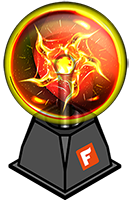
![]()
Hi FLAGHUNTER!
Today we have some energetic news for you about the brand new community tool at FLAGSTACK: the Force Field!
Such a mighty power tool is not created overnight... The first announcements were made at the beginning of March, while our development team was still fine-tuning the product. By mid-March, the Force Field was technically developed enough for FHQ to start testing. So what can we say?
Even in the early stages of development, there was mighty power! Shortly thereafter, the Official FLAGSTACK Volunteers were taken into the circle of testers. A little adjustment here, a click there - and then it was time to unleash the power of the Force Fields in a somewhat larger group with BETA testers on the live system... We simulated every day and extreme situations all over the world and the reaction of the testers was consistently positive! This tool was fun for everyone, such a Force Field is a real win-win element!
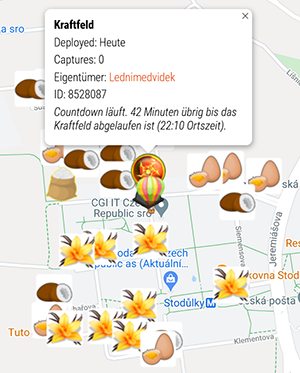
Win 1: As soon as a Force Field is activated anywhere, all kinds of Jumper Flags will be attracted there. So make sure you empty your inventory of Jumper Flags for travel, because the Force Field will increase the capture count significantly!
Win 2: When you activate (i.e. deploy) a Force Field, Jumper Flags are attracted to the 500m area of effect around the Force Field. This is such an amazing addition to the still restrictive time of the Corona Pandemic that it allows you to deliberately play FLAGSTACK when and where it works best for you! Mega Insider Tip from the BETA group: if you also activate a Personal Happy Hour or even a Personal Happy Hour PLUS before capturing the attracted Jumper Flags, you can enjoy your personal FLAGSTACK luck ;-)
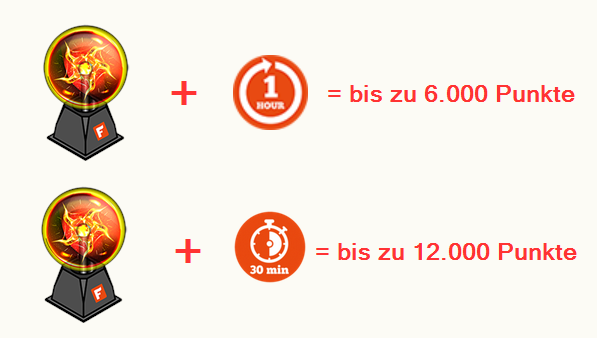
Did you know that the Jumper Flags, offered as a recipe ingredient for the virtual world trip, are a specialty item that can be captured every 24 hours? Is this convincing you? You can get the recipe jumpers for March / Australia at a reduced price here: https://flagstack.help/produkt/virtual-world-trip-recipe-au/?lang=en#number
There is the right strategy for every FLAGHUNTER:
Are you on your own today? See Win 2 :-)
Are you thinking about your team in Team Battle? Every capture counts...
Are you planning another event hopefully soon? Many participants can benefit from a Force Field....
The sale starts exactly NOW and HERE: https://www.flagstack.net/shop
Another tip that should not remain unmentioned: 3 Force Fields are already included in the current Corona Survival Kit 03.21 - click here for a super bargain price: https://flagstack.help/produkt/the-corona-survival-kit-03-21/?lang=en
Are you interested in the parameters of this new option? OK, then keep reading for a moment:
While the Force Field is active (60 minutes after deploy), up to 60 Jumper Flags will be attracted by the energy of the Force Field, even at times when no Jumper Flags would actually appear at your location. You can activate max 1 Force Field at a time. The distance to other Force Fields is at least 5 meters. The effective radius around the Force Field is 500m.
Give it a try right now and be convinced by your personal practice test. And remember to scare your Jumper Flags out of your inventory - there they won't give you any points!
More Force Field extensions are already in the works - we'll keep you in the loop.
Enjoy the Jumper flood with the Force Field, stay healthy and confident!
Your Team FLAGSTACK
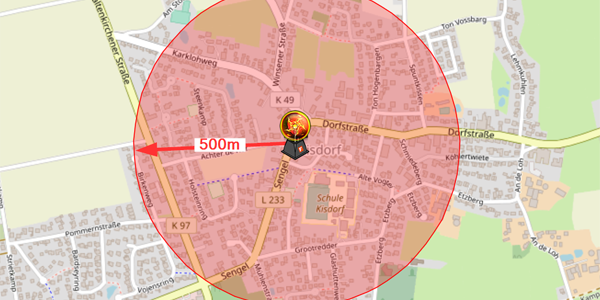
2021-03-20
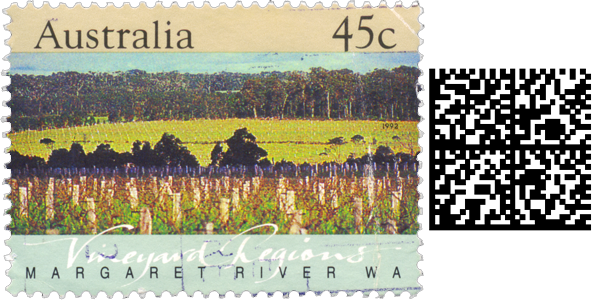
Welcome to the third country of the virtual world trip: Australia! DTas has planned a great round trip for the Official FLAGSTACK Volunteers and presents you the seventh of the 10 highlights of sights...
From the sandstone mountain ranges "Bungle Bungle", DTas leads his virtual travel group towards the coast again - this time to the south-west coast to and into Margaret River.
Margaret River is namely a city located in the valley of the eponymous river. The coast of Margaret River west of the city is a world-renowned surfing area because of its breakwaters. In colloquial terms, the area is also known as Margs - in case you might have heard of it.
The surrounding area used to have timber and agricultural production, but now this area is a well-known wine region and attracts thousands of visitors. Although the region produces only three percent of Australia's total grape production, it has a share of over 20 percent of the Australian premium wine market. A Mediterranean climate with no extremes in summer and winter temperatures provides ideal growing conditions. The climate is described as similar to Bordeaux in a dry vintage. Humidity levels are ideal during the growing period and the combination of climate, soil and viticulture practices leads to consistently high quality fruit of intense flavour. Consequently, annual vintage results continue to exceed expectations and reinforce Margaret River's reputation as one of the premium wine-producing regions of the world. The principal grape varieties in the region are fairly evenly split between red and white; Cabernet Sauvignon, Chardonnay, Sauvignon blanc, Shiraz, Merlot, Chenin blanc and Verdelho.
In the mood for a bit of national park again? Several hundred caves are located near Margaret River, all of them within Leeuwin-Naturaliste National Park. Six of these are open to the public. One of which being the multi-chambered Mammoth Cave, which lies 21 kilometres (13 mi) south of the town and contains fossils dating back over 35,000 years. The cave can be explored by a self-guided audio tour, and is one of the few caves in Australia offering partial disabled access.
Are you a surf enthusiast? There are about 75 breaks along the 130-kilometer coastline here. Typically, major surf competitions are centered on Margaret's Main Break (also known as Surfers Point), which breaks near Prevelly at the mouth of the Margaret River. The Cowaramup Bombora ("Cow Bombie") big-wave surf break 2 kilometers offshore produces one of the biggest waves in Australia.
Dream yourself to endless beach, sitting on a surfboard in the sand and with a glass of wine in your hand...
Your Team FLAGSTACK

PS: Have you scanned the Friend Flag Code yet???
(Code Valid until 22.03.2021 - 19:00, time zone FHQ / Europa / Berlin)
2021-03-18

Welcome to the third country of the virtual world trip: Australia! DTas has planned a great round trip for the Official FLAGSTACK Volunteers and presents you the sixth of the 10 highlights of sights...
Did you like the stone sights of the last stopover in Uluṟu-Kata-Tjuṯa National Park? Well, let us tell you today what special spots there are further west.... We join the Official FLAGSTACK Volunteers on their virtual journey to Purnululu National Park!
Purnululu National Park used to be called Bungle Bungle National Park. It is located in the eastern Kimberley in the federal state of Western Australia. This area can be reached either virtually with us or on site only with a four-wheel drive vehicle. Characteristic of the Purnululu National Park are on the one hand the worldwide singular, beehive-like sandstone mountain range (Bungle Bungle) and on the other hand the extremely narrow rock gorges in the sandstone plateau with palm oases.
The lost world of the Bungle Bungles, as they are described, is a natural wonder in the middle of remote wilderness. What is now Purnululu National Park has been the home of aboriginal people for thousands of years. There are numerous Aboriginal art and burial sites in this area. The name "Purnululu" means sandstone in the language of the local Kija tribe. It is believed that it was either misunderstood as "Bungle Bungle" or that it is the incorrect spelling of the common Kimberley grass Bundle Bundle. However, rumors still circulate regarding the true origin and meaning of Bungle Bungle, making this "lost world" seem even more mysterious. The results of radiocarbon measurements suggest that indigenous people have lived in this region for at least 20,000 years.
The Purnululu National Park in the northwest of this nature reserve was established in 1987. It covers about 240,000 hectares (ha), the nature reserve another 110,602 ha. The park has been a UNESCO World Heritage Site since 2003. However, the Bungle Bungle Range has been isolated from the outside world until 1983, making it one of the best kept secrets in history. A spectacular landscape of rock formations rising 250 meters above the surrounding semi-arid grass steppe, it is considered the most impressive sandstone cone karst area in the world.
The formation consists of fragile sandstone, covered by a thin layer of silica and lichens. The massif covers about 45,000 ha and is of Devonian origin, about 375 to 350 million years old. Tectonic movements have uplifted the massif twice, once about 250 million years ago and another time about 20 million years ago.
The rounded towers of the Bungle-Bungle massif (also called beehives or domes) to the south and east are the result of severe erosion created by the heavy cloudbursts of the rainy season. The sandstone is low bonded and open porous, therefore it sands easily.
In the north and west, the plateau has essentially been preserved, rising 200-300 meters above the surrounding plains, from which isolated rivers have eroded some deep gorges and steeply sloping chasms. From the savannah of the west and north abruptly rises the abrupt edge of the plateau.
The plateau and the domes themselves are vegetation-free, but both between the beehives and at the canyon entrances there are green islands with more than 600 documented plant species. The park is home to plants, some of which do not even have a name yet, having only recently been discovered.
Animals that are easiest to spot in the park are the birds. There are about 150 species, including spinifex pigeons and flocks of colorful budgies.
If you ever want to visit live on site to admire the beehive-like mountain range: The park is open from 1 April to 31 December and can be visited with an Australian National Park Pass. Since the rainy season usually starts in October/November, the park may close earlier in some years, depending on road conditions.
Let's dream together about long walks through this unique landscape...
Your Team FLAGSTACK

PS: Have you scanned the Friend Flag Code yet???
(Code Valid until 20.03.2021 - 21:30, time zone FHQ / Europa / Berlin)
2021-03-16

Welcome to the third country of the virtual world trip: Australia! DTas has planned a great round trip for the Official FLAGSTACK Volunteers and presents you the fifth of the 10 highlights of sights...
Here we go into the heartland! The 8 Official FLAGSTACK Volunteers travel south to the next national park, the Uluṟu-Kata-Tjuṯa National Park...
The Uluṟu-Kata-Tjuṯa National Park (formerly Ayers Rock National Park) is also listed by UNESCO as a World Natural and Cultural Heritage Site. The park covers 1326 square kilometers. Parts of the park are the famous Uluṟu Rock (Ayers Rock) and, 40 km to the west, Kata Tjuṯa (Mount Olga). The main tourist settlement is Yulara.
Uluṟu is the most famous natural landmark in Australia. This inselberg rises 348 meters above the landscape. The word Kata Tjuṯa means "many heads" and refers to a group of 36 rocks whose material is more than 500 million years old and was exposed by erosion about 300 million years ago. Uluṟu and Kata Tjuṯa are culturally significant to the original inhabitants of the territory, the Anangu Aborigines, and are subject to special taboos. Today, they also host guided walking tours where you can learn more about the flora, fauna and traditional bush foods of the area, as well as the Dreamtime stories. The Anangu Aborigines are the owners of the Uluṟu-Kata-Tjuṯa National Park. In 1976, the Aboriginal Land Rights (Northern Territory) Act recognized the rights of the Aborigines; 9 years later, in 1985, they obtained freehold title to the area of the park. They leased the land back to the Australian government for 99 years. Since then, the Anangu and Parks Australia have been working together under joint management. Its aim is to preserve the Anangu culture, maintain an ecological balance and give visitors an insight into the culture and history of the park.
At first glance, the landscape of Central Australia may look desolate, but closer inspection reveals life in the desert. Animals and plants have adapted to the extreme climate and form a unique biotope. Many of these animal and plant species were used by the traditional owners, the Aborigines, as medicine or as a source of food. Trees such as the Mulgabush and Bloodwood, a genus of eucalyptus, were used to make spearheads, boomerangs and vessels. The red sap of the Bloodwood tree was used as a disinfectant and as an inhalant for colds. Other trees such as the River Red Gum, also a species of eucalyptus and Duboisia species such as the Silver Oak and Hakeas are in themselves a source of food. Spinifex, a genus of spiny sweet grasses, have a distinctive root system that keeps the desert sand from blowing away. The Anangu use a species of this spinifex to make gum. The bush is pounded on the ground until it breaks up into small pieces, which are then heated to form a tar-like liquid. This rubber is used for hunting and for tools.
If you ever visit the Uluṟu-Kata-Tjuṯa National Park yourself, please pay attention to the rules in the park, because there are high penalties for non-compliance. These rules are for the protection of flora and fauna and for the protection of Aboriginal sacred sites.
Reverent greetings from this unique and impressive region sends you
Your Team FLAGSTACK

PS: Have you scanned the Friend Flag Code yet???
(Code Valid until 18.03.2021 - 18:00, time zone FHQ / Europa / Berlin)
2021-03-14
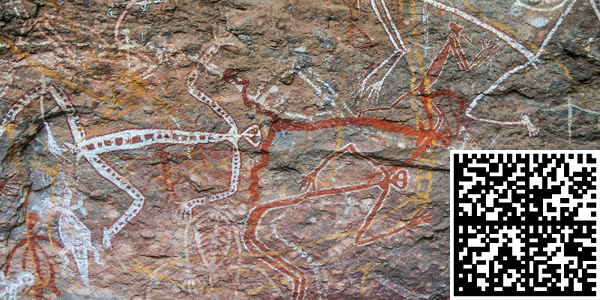
Welcome to the third country of the virtual world trip: Australia! DTas has planned a great round trip for the Official FLAGSTACK Volunteers and present you the fourth of the 10 highlights of sights...
From the wonder of the Great Barrier Reef, Official FLAGSTACK Volunteers travel on to Kakadu National Park in Australia's Northern Territory.
The park is considered one of the most beautiful national parks in Australia due to its unique fauna and flora. It was officially established in 1981, was declared a "Heritage of Humanity" by UNESCO in 1992, covers an area of about 19,804 square kilometers and stretches almost 200 kilometers from north to south and over 100 kilometers from east to west. Kakadu National Park has been included in UNESCO's list of both World Heritage Sites and World Heritage Sites because of its outstanding natural and cultural value. The park contains one of the finest and most extensive collections of rock paintings in the world - an indication of how long the aboriginal connection with this area has lasted. The park contains magnificent landscapes, from the wild and rugged sandstone flanks of the high plateau to the extensive forest areas and vast wetlands.
The park is a cultural landscape which, according to the belief of the indigenous people, was given shape by their spiritual ancestors during the Creation Era: They walked the land and created the landscape forms, plants, animals and Bininj/Mungguy (indigenous people) on their journey. They taught the Bininj/Mungguy how to live and how to care for the land. The park is now managed collaboratively by its traditional owners, the Aboriginal people, and Parks Australia staff. They aim to protect the interests of the traditional owners, preserve the park's cultural heritage, and encourage visitors to the park to make use of what it has to offer with respect for nature and Aboriginal tradition. What a great idea - let's keep our fingers crossed that this plan will work out and that nature and traditions will be given such recognition and respect.
The name "Kakadu" originated from the mispronunciation of the word "Gaagudju", which is the name of the Aboriginal language spoken in the northern part of the park. Aborigines have inhabited the Kakadu National Park area for probably 50,000 years. In total, there are more than 5,000 art sites that have been created over thousands of years, demonstrating settlement for at least 20,000 years. A stone axe found in eastern Arnhem Land has been dated to an age of 35,500 years, and is considered the oldest artifact in the region and the oldest tool of its kind in the world.
Fire is part of the landscape of Kakadu National Park, especially on the vast grasslands and bushlands that are exposed to long dry periods. The flora is adapted to fire and some plants need these bushfires to reproduce, as the seed pods only burst open at high temperatures. Fire in general is less dangerous here than in southern parts of Australia. Many trees are resistant to fire, and other plants have a rapid regeneration period. Controlled burning is done in Kakadu National Park in consultation with the traditional owners, the Aborigines.
Are you planning a trip to this wonderful area yourself? Please pay attention to the seasons: Dry season is from April to September with an average of 32°C; "Build-Up" is the time before the onset of the monsoon rains October to December with a maximum of 37.5°C in October; rainy season is from December to March with an average of 33°C in January. Visitors in the rainy season can experience the vivid changes when stream and river beds fill up after the onset of the monsoon rains and their water pours into the floodplains. The young shoots transform the eucalyptus forests into a sea of bright green. However, the humidity often rises uncomfortably high, accompanied by frequent rains. On the other hand, the waterfalls are at their most beautiful during this period, although some can only be seen from the air, as access to several park areas is severely restricted during this time.
Official FLAGSTACK Volunteers continue to explore this vast, diverse, and culturally rich area....
Enthusiastic greetings sends
Your Team FLAGSTACK

PS: Have you scanned the Friend Flag Code yet???
(Code Valid until 16.03.2021 - 19:00, time zone FHQ / Europa / Berlin)
2021-03-12
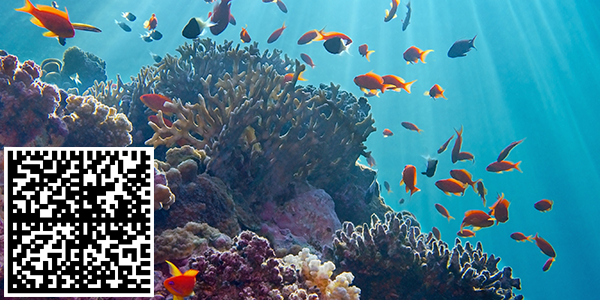
Welcome to the third country of the virtual world trip: Australia! DTas has planned a great round trip for the Official FLAGSTACK Volunteers and present you the third of the 10 highlights of sights...
We stay at the coast. From Gold Coast, DTas and his 7 guests travel on to the Great Barrier Reef - a world-famous wonder!
The Great Barrier Reef off the northeast coast of Australia is the largest contiguous collection of over 2,900 individual coral reefs on earth. In 1981, it was declared a World Heritage Site by UNESCO and is also known as one of the seven wonders of the natural world. The origin of the Great Barrier Reef dates back some 600,000 years.
The Great Barrier Reef, with its 359 species of stony coral, forms the largest structure on Earth created by living creatures. It provides habitat for a variety of other species - including 80 species of soft corals and sea feathers, over 1,500 species of fish, 1,500 species of sponges, 5,000 species of mollusks, 800 species of echinoderms such as starfish, 500 different species of kelp and 215 species of birds. Six of the world's seven species of sea turtles are found in the Great Barrier Reef.
Coral reefs are very fragile ecosystems. Any change can cause unpredictable damage. Corals can only thrive and survive in clear, sunlit waters with a very restricted temperature range - around 18 to 30 degrees Celsius.
To get a close-up look at the Great Barrier Reef, Official FLAGSTACK Volunteers turn to one of about 820 reef tour operators, which provide about 1,500 boats, helicopters and small planes for tours to the reef. In the towns, companies offer trips ranging from day trips to multi-week sailing trips.
Dry-footed visitors can marvel at the reef by taking a ride on a glass-bottom boat or semi-submarine, as well as by visiting one of the countless underwater observatories. However, the most sought-after type of reef experience is snorkeling or scuba diving.
The existence of the Great Barrier Reef and its great biodiversity is seriously threatened by the anthropogenic greenhouse effect and the resulting changes in the chemistry of the oceans. If coral reefs like the Great Barrier Reef are to continue to exist in the future, effective climate protection measures are needed very quickly to rapidly combat global warming.
Currently, we are all very aware of how important health is and how quickly normal life can be disrupted. Let's all just change small things in everyday life and live more consciously with regard to nature conservation. Even small improvements have a big impact in the sum and thus nature and its health can be protected.
Nature loving greetings sends you
Your Team FLAGSTACK

PS: Have you scanned the Friend Flag Code yet???
(Code Valid until 14.03.2021 - 15:00, time zone FHQ / Europa / Berlin
2021-03-10
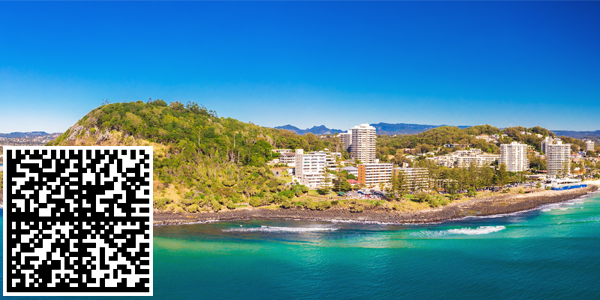
Welcome to the third country of the virtual world trip: Australia! DTas has planned a great round trip for the Official FLAGSTACK Volunteers and present you the second of the 10 highlights of sights...
The journey continues... Coming from Sydney we head north along the east coast to Gold Coast! Yes, you read correctly - to Gold Coast, not to the Gold Coast...
The Gold Coast region was settled over 23,000 years ago. It was home to the Yugambeh Aborigines. In 1770, James Cook was the first European to sight the coastline. 53 years later, settlement of the fertile area began. Shortly thereafter, loggers, fishermen, cattle ranchers and sugar cane farmers settled in the region. With the founding of Southport in 1875, tourism became established. The Gold Coast experienced a real tourist boom in 1925, after several hotels and a good infrastructure were built. Over the course of 50 years, a loose collection of smaller towns has developed into Queensland's second largest city with a population of just under 600,000 (as of 2016). Gold Coast is Australia's sixth largest city and also the country's most attractive region for tourists. In the 1960s, construction of the first high-rise buildings began. Another essential step in promoting tourism was the opening of the airport in 1981 in the Coolangatta district. Numerous attractions followed, such as amusement parks, green spaces, shopping centers and nightclubs.
Thanks to the subtropical climate (average annual temperature is about 26.3°C in daytime) and 57 km of attractive sandy beaches, including the world-famous Surfers Paradise beach (all surfers shout YAY!), millions of Australian and international tourists are attracted - as well as our Official FLAGSTACK Volunteers! Lednimedvidek, CacheKidsCB, Sim1, Cbsassy, asp_fan_cb, Borghuis, Thwe16 and DTas are definitely taking a virtual trip to the subtropical hinterland and walking through rainforest passing waterfalls...
And now continue dreaming for a moment... Of 25-30°C now in March... Of fine sand trickling through your toes as you stroll barefoot along the beach... A delicious ice cream in your hand (don't let it melt!) and your gaze lingeres on the endless blue sea...
Enjoy this moment and stay healthy!
Your Team FLAGSTACK

PS: Have you scanned the Friend Flag Code yet???
(Code Valid until 12.03.2021 - 15:00, time zone FHQ / Europa / Berlin)
2021-03-08
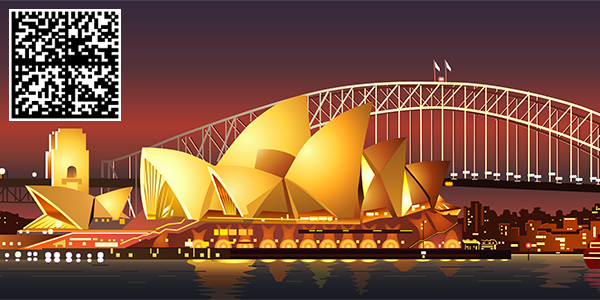
Welcome to the third country of the virtual world trip: Australia! DTas has planned a great round trip for the Official FLAGSTACK Volunteers and present you the first of the 10 highlights of sights...
But first we are happy to see that the virtual flights were on time and Lednimedvidek, CacheKidsCB, Sim1, Cbsassy, asp_fan_cb, Borghuis, Thwe16 and DTas landed safe and sound in Sydney. One thing that is immediately noticeable is the pleasant temperature of about 20 °C. Some of the volunteers are still freezing at home - so nice that these 8 have a great trip ahead and that we can all join them. So tell us, volunteers, what you have seen at the first highlight :-)
We begin on the east coast of this vast country, looking directly at one of the most striking and famous buildings of the 20th century and Sydney's landmark - the Sydney Opera House and Sydney Harbour Bridge.
In the late 1940s, the idea matured in Sydney that this city should also have an opera house. A representative appearance of such a building was considered helpful. The originally set construction price was overdrawn by a factor of fifteen, and completion could only be realized with the help of a lottery set up especially for the purpose.
Construction work began in 1959. However, the curved shells of the roof caused great problems, as they were difficult to calculate. Often, new architectural ground had to be broken, and problems were solved on an ad hoc basis. The design often had to be modified to take account of new realities. The complex geometry on the roof alone was redesigned over twelve times in six years.
Today, the Sydney Opera House is one of the most popular tourist attractions and, along with the Sydney Harbour Bridge and Uluṟu (Ayers Rock), the landmark of Australia. The Sydney Opera House is one of the largest cultural centers in the world. It hosts about 2,500 performances and events annually, with about four million visitors. Free concerts and other events are occasionally held as part of the Sydney Festival. The Opera House has been regularly included as an exhibition venue in the biennial Biennale of Sydney since 1978.
The Sydney Harbour Bridge is a bit older... Officially opened on 19 March 1932, the Sydney Harbour Bridge is the main link between Sydney's north and south coasts across Sydney Harbour (Port Jackson) and is known by locals simply as the "coat hanger".
The span of the Sydney Harbour Bridge is 503 meters, and the apex of the arch rises 134 meters above sea level, although this height can increase by 18 cm on hot days due to the expansion of the steel. There are 39,006 tons of steel used in the arch. A total of 52,800 tons of steel were used, making the bridge one of the heaviest and widest arch bridges in the world. The clearance height for ships is 52 meters.
Protective painting of the bridge is an endless undertaking, as it usually takes ten years, consuming 30,000 liters of paint. Once a painting crew has completely painted the bridge, it has to start all over again. A total of 485,000 square meters of steel must be painted.
Before the bridge was built, about 40,000 vehicles used the ferries every day. In 1992, 181,878 vehicles passed the bridge daily, and after the construction of the Sydney Harbour Tunnel at the turn of the millennium, about 161,000 vehicles still did. The amount of the toll depends on the time of day. Since 1 October 1998, it has been possible to climb the bridge arch for a fee. Many visitors are led up in groups every day, the one millionth on 14 April 2003. Since 1993, the bridge has been the center of the New Year's Eve celebrations in Sydney Harbour, which are always celebrated with a gigantic fireworks display. The bridge is also pyrotechnically illuminated.
WOW, what a start for the Australia round trip.... Can this still be topped? Read on the next few days excited and stay healthy!
Your Team FLAGSTACK

PS: Have you scanned the Friend Flag Code yet???
(Code Valid until 10.03.2021 - 15:00, time zone FHQ / Europa / Berlin)
2021-03-04
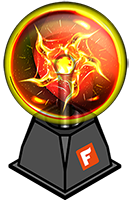


On the trip through the USA, the Official FLAGSTACK Volunteers made a stop in New York to meet with Cbsassy at Nikola Tesla Corner. Remember what they did there? The trip report said that they have been working on a secret project for a while and together in New York they came up with the bright idea for the last missing piece of the puzzle.
This project has been fine-tuned in detail by FHQ (FLAGSTACK Head Quarter) and "The Tech" the last weeks and days and is now ready to be presented to you!
May we introduce? Das KRAFTFELD / The FORCE FIELD
This force field is an option that helps you to collect Jumper Flags * even more comfortably.
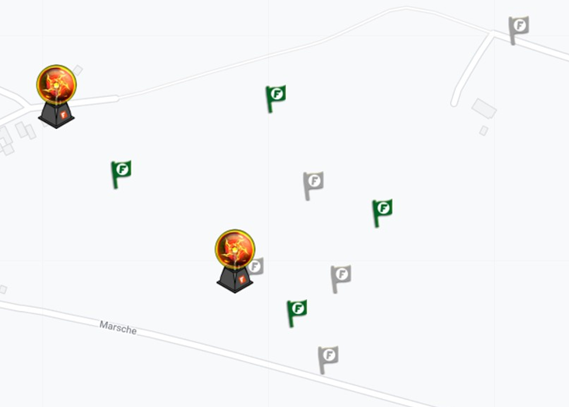
|
How exactly does the force field work? |
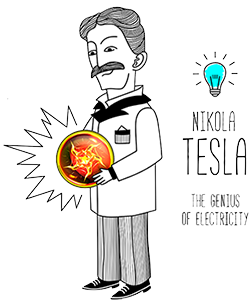 |
In the Corona Survival Kit 03.21 you get 3 Jumper Flags plus and 2 Dice Flags as well as 3 force fields to get to know! You remember, besides the great offer (26.50 € instead of 53 €) you get an exclusive badge and a 50% discount code for the webshop .
This Corona Survival Kit 03.21 is looking forward to you taking it from the Fanshop - you will have a lot of fun together!
 Flagstack - Capture The Flag.png)
Testing will continue until mid-March, after which the powers will be unleashed and you can activate your force field. Watch out for the starting signal - and then it’s time to play...
Energetic greetings from FHQ
Your Team FLAGSTACK
PS: * = Jumper Flags and Jumper Flags plus
PPS: We are looking for 10 beta testers! Contact us at info@flagstack.net !

example